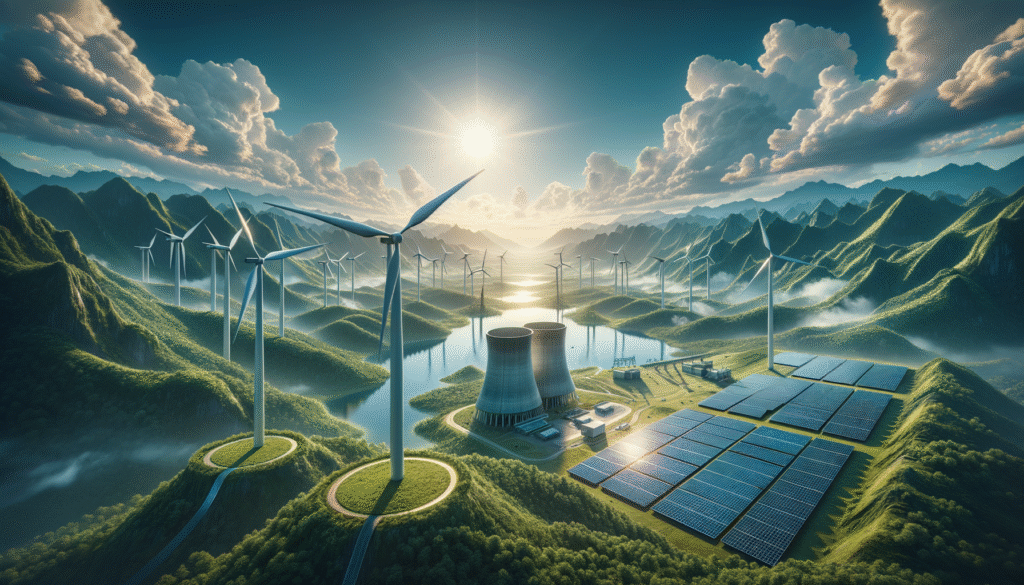
The Power of Renewable Energy: A Deep Dive into Sustainability and Innovation
Harnessing the sun, wind, water, and geothermal heat represents a monumental shift in global energy production, a shift away from finite fossil fuels towards inexhaustible renewable sources. This transition is not merely an environmental imperative; it’s an economic opportunity, a technological challenge, and a social responsibility demanding immediate and comprehensive action.
Solar Power: Sunlight’s Untapped Potential
Photovoltaic (PV) solar cells convert sunlight directly into electricity, a process remarkably efficient and constantly improving. The efficiency of solar panels has increased dramatically over the past few decades, with current generation panels achieving conversion rates exceeding 20%. This continuous technological advancement drives down costs, making solar energy increasingly competitive with fossil fuels. Beyond rooftop installations, large-scale solar farms, or solar power plants, are becoming increasingly common, generating significant amounts of electricity for grid integration. Concentrated solar power (CSP) plants utilize mirrors to focus sunlight onto a receiver, generating heat to drive turbines and produce electricity, offering a solution for energy storage through molten salt technology. The modular nature of solar technology allows for deployment in diverse geographical locations, from sunny deserts to rooftops in urban environments. Challenges remain, including intermittency (sunlight’s dependence on weather patterns) and land use considerations for large-scale projects. However, advancements in energy storage technologies, such as battery storage and pumped hydro storage, are actively mitigating the intermittency issue.
Wind Power: Harnessing Nature’s Breath
Wind turbines, elegant structures transforming wind energy into electricity, are a cornerstone of renewable energy infrastructure. Onshore wind farms are a mature technology, cost-effective and widely deployed across many countries. Offshore wind farms, situated in deeper waters, offer greater wind speeds and reduced visual impact, though they present higher installation and maintenance costs. Technological innovation in turbine design, blade materials, and control systems continuously improves wind energy capture efficiency. The increasing size of turbines allows for greater energy output per unit, further enhancing cost-effectiveness. The integration of wind power into national grids is facilitated by sophisticated forecasting models and smart grid technologies, which optimize energy distribution and minimize fluctuations. However, concerns about the visual impact of wind turbines, noise pollution, and potential effects on avian populations need careful consideration and mitigation strategies.
Hydropower: The Unstoppable Force of Water
Hydropower, harnessing the kinetic energy of moving water, is a well-established renewable energy source. Hydroelectric dams generate electricity by channeling water flow through turbines, producing a consistent and reliable power supply. Pumped hydro storage systems utilize excess electricity during off-peak hours to pump water uphill, storing energy for later release and power generation during peak demand, providing valuable grid stability. Small-scale hydropower projects, such as run-of-river systems, are increasingly popular, offering decentralized energy production with minimal environmental impact. However, large-scale dam projects can have significant environmental consequences, affecting river ecosystems, fish migration patterns, and potentially causing displacement of local communities. Sustainable hydropower development requires careful environmental impact assessments and mitigation measures.
Geothermal Energy: Earth’s Inner Heat
Geothermal energy taps into the Earth’s internal heat, a vast and virtually inexhaustible resource. Geothermal power plants utilize steam or hot water extracted from underground reservoirs to drive turbines and generate electricity. Geothermal heat pumps utilize the relatively stable temperature of the Earth’s subsurface for heating and cooling buildings, providing efficient and environmentally friendly climate control. Geothermal energy is a reliable and consistent source of power, less susceptible to weather variations than solar or wind energy. However, geographical limitations restrict its widespread adoption, as suitable geothermal resources are not uniformly distributed. Further exploration and development of enhanced geothermal systems (EGS) aim to expand the accessibility of this valuable resource.
Bioenergy: Sustainable Biomass Utilization
Bioenergy utilizes biomass, organic matter derived from plants and animals, to produce energy. Biomass can be burned directly for heat, converted into biofuels for transportation, or processed into biogas, a renewable natural gas. Sustainable biomass production requires responsible forest management and agricultural practices to minimize environmental impacts. Bioenergy can offer a pathway to decarbonize transportation and heating sectors, but careful consideration of land use, greenhouse gas emissions from cultivation and processing, and potential competition with food production is crucial. Advancements in biofuel technologies, such as advanced biofuels derived from algae or cellulosic biomass, aim to improve efficiency and reduce environmental concerns.
The Grid Integration Challenge: Smart Grids and Energy Storage
The intermittent nature of renewable energy sources like solar and wind poses a challenge for grid integration. Smart grid technologies, utilizing advanced sensors, communication networks, and control systems, optimize energy distribution and manage fluctuations in supply and demand. Energy storage technologies, such as battery storage, pumped hydro storage, compressed air energy storage (CAES), and thermal energy storage (TES), are crucial for addressing intermittency and ensuring grid stability. Advances in battery technology, driven by the electric vehicle market, are lowering costs and increasing the capacity of energy storage solutions.
Economic and Social Impacts: A New Era of Opportunity
The transition to renewable energy presents significant economic opportunities, creating jobs in manufacturing, installation, maintenance, and research. The renewable energy sector is a rapidly growing industry, attracting substantial investment and fostering innovation. Access to affordable and reliable energy is crucial for economic development and social progress, particularly in underserved communities. The shift towards renewable energy can contribute to energy independence, reducing reliance on volatile global fossil fuel markets. However, the transition requires careful planning and policy support to ensure a just and equitable transformation.
Environmental Benefits: Mitigating Climate Change and Pollution
Renewable energy sources produce little to no greenhouse gas emissions during operation, offering a crucial pathway to mitigate climate change. The reduced reliance on fossil fuels leads to lower air and water pollution, improving public health and environmental quality. Renewable energy deployment contributes to a more sustainable future, protecting ecosystems and biodiversity. However, the lifecycle environmental impacts of renewable energy technologies, such as manufacturing processes and material sourcing, need careful assessment and optimization.
Policy and Regulatory Frameworks: Enabling the Transition
Government policies and regulations play a critical role in accelerating the adoption of renewable energy. Renewable portfolio standards (RPS) mandate a certain percentage of electricity generation from renewable sources. Feed-in tariffs provide financial incentives for renewable energy producers. Tax credits and subsidies reduce the cost of renewable energy technologies. Carbon pricing mechanisms, such as carbon taxes or cap-and-trade systems, incentivize the reduction of greenhouse gas emissions. International cooperation and agreements are essential for promoting global renewable energy deployment. A supportive regulatory environment is crucial for attracting investment, stimulating innovation, and ensuring a smooth transition to a sustainable energy future.
















